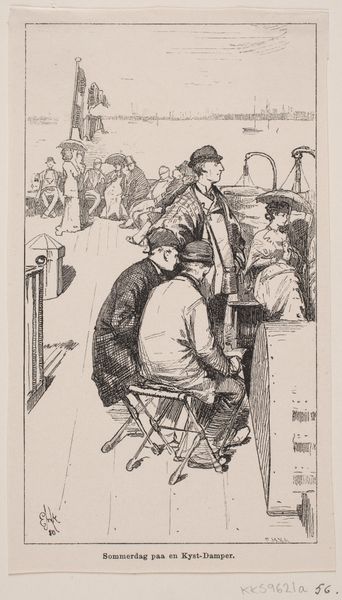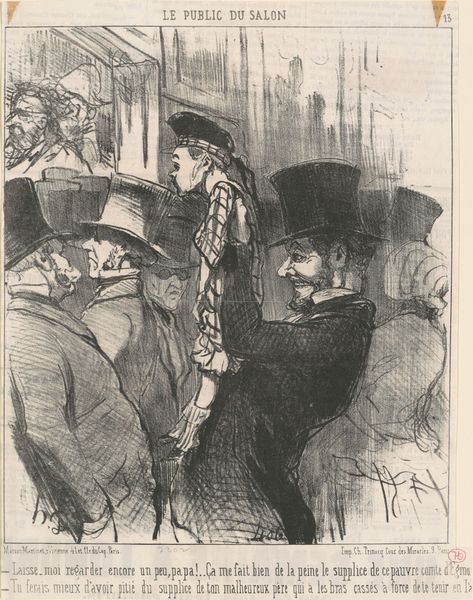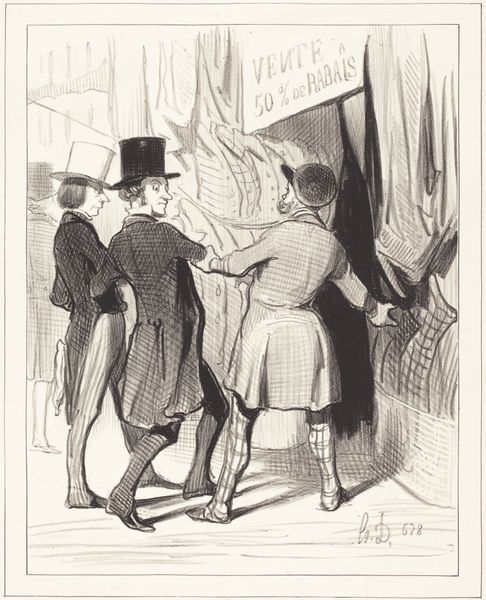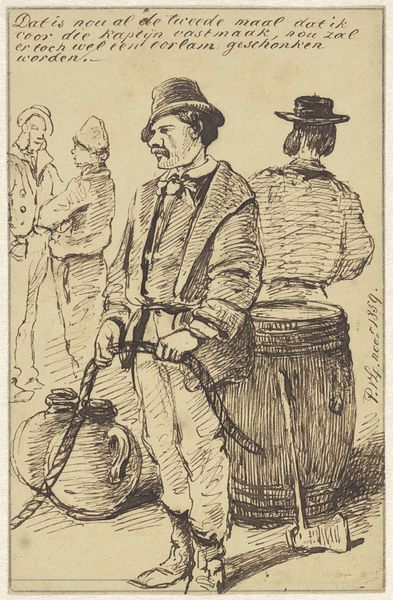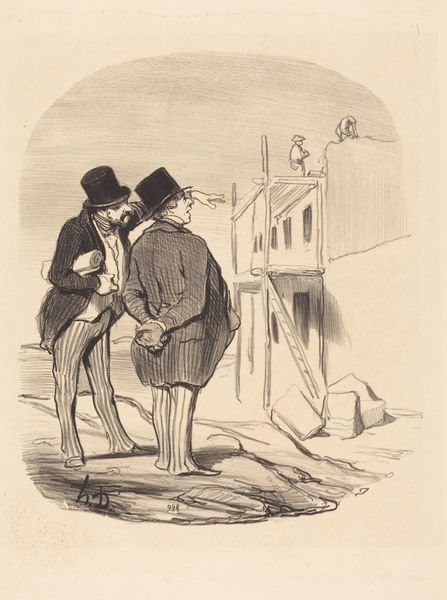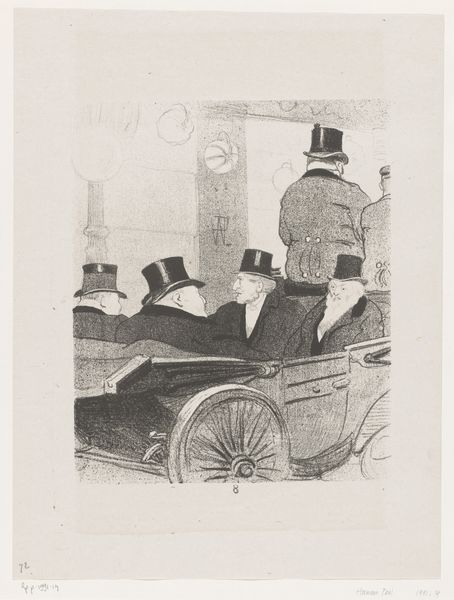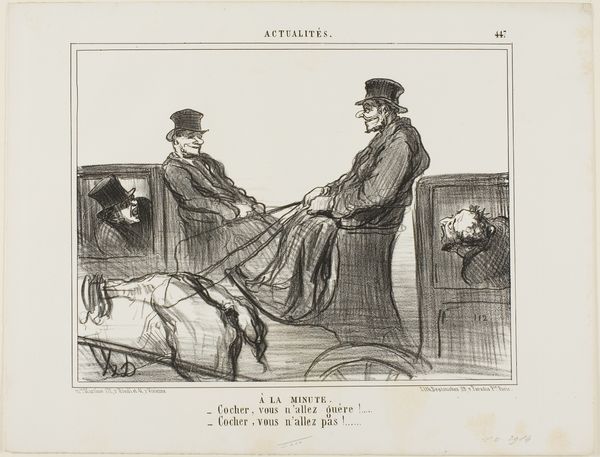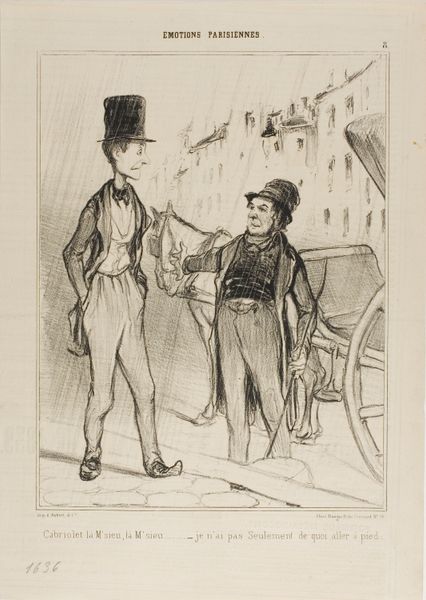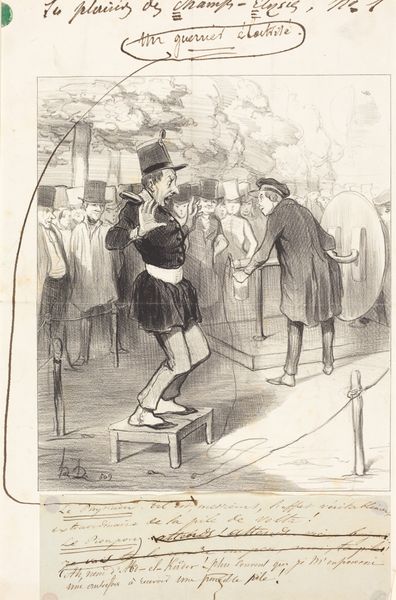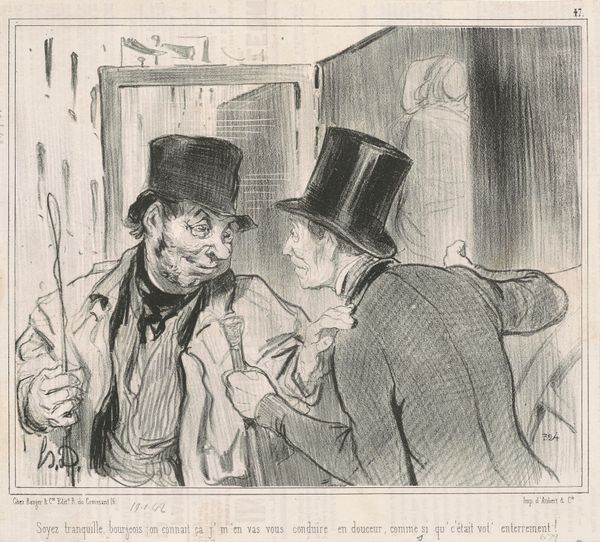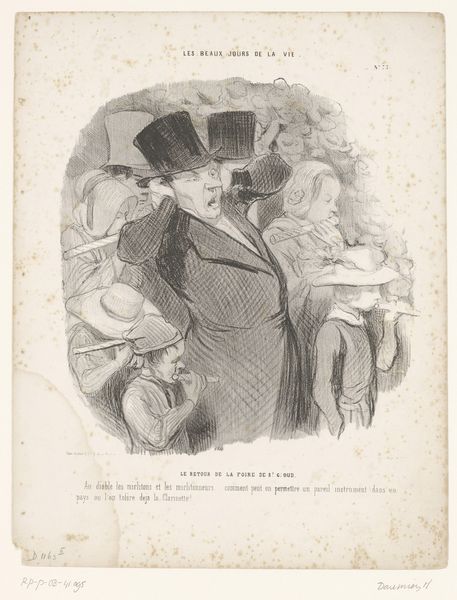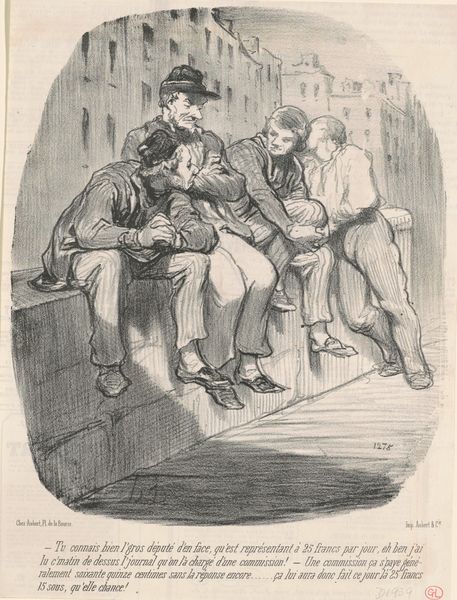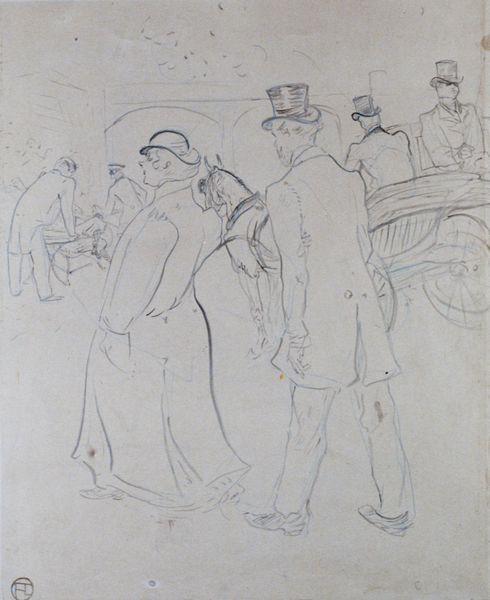
“- Coachman, are you booked? - No, citizen. - Well then: 'you'd rather accept being advised than hired out?,'” plate 49 from Émotions Parisiennes 1842
0:00
0:00
drawing, lithograph, print, paper, pen
#
drawing
#
lithograph
# print
#
caricature
#
paper
#
romanticism
#
pen
#
genre-painting
Dimensions: 234 × 196 mm (image); 347 × 247 mm (sheet)
Copyright: Public Domain
Curator: Welcome. We're standing before plate 49 from Honoré Daumier's Émotions Parisiennes series, created in 1842. The full title is quite a mouthful: " - Coachman, are you booked? - No, citizen. - Well then: 'you'd rather accept being advised than hired out?'" It’s a lithograph on paper. Editor: My initial impression? Discomfort. The awkward angles, the strained posture of the figures. There’s something almost confrontational about it. The lithographic technique feels very immediate, rough even. Curator: Indeed. Daumier masterfully employed lithography as a vehicle for social critique. Note how the quick strokes bring a sense of immediacy, likely mirroring the hurried pace of Parisian life. It’s evident that printmaking facilitated Daumier’s wider audience in magazines and papers. Editor: And observe how the two figures mirror each other: both in hats, similar noses...It suggests a kind of perverse relationship. The coachman aloft, indifferent almost, with that slack whip – is he really offering a service? Meanwhile, the potential passenger is practically begging, hand outstretched as though seeking guidance. Curator: Consider also the societal dynamics at play here. The emergent class distinctions in 19th-century Paris fueled a dynamic labor market ripe for artistic comment. The materials - the paper, the lithographic stone, even the ink - all became agents in the distribution of his pointed caricatures. These materials literally became messengers in a society struggling with inequality. Editor: Yes. I am compelled to interpret their clothing as emblems of their aspirations: The coachman, with a slouch hat, signaling practicality versus the top hat on the figure extending a hand which says both bourgeois respectability, but, perhaps, vulnerability. It begs the question about the illusion of choice and social mobility. Curator: Exactly! Daumier deftly employs everyday objects as symbols to highlight power dynamics. This piece reveals much about the era's shifting economic structures and, I think, resonates even today as we reconsider similar hierarchies in a new light. Editor: Reflecting on Daumier’s print, it’s a potent distillation of aspiration, class and that unnerving Parisian feeling of being both intensely connected and utterly alone. Curator: Yes. And on the commodification of labor and the silent critique embedded in the mass-produced image, expertly handled to fuel a quiet, but resonant rebellion.
Comments
No comments
Be the first to comment and join the conversation on the ultimate creative platform.
